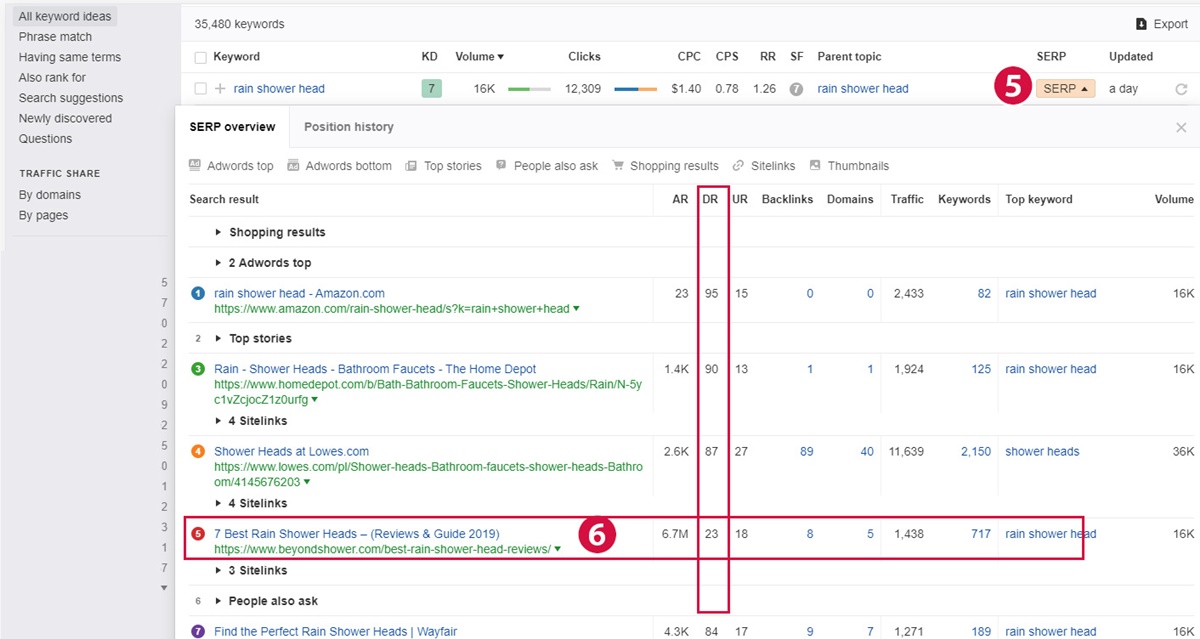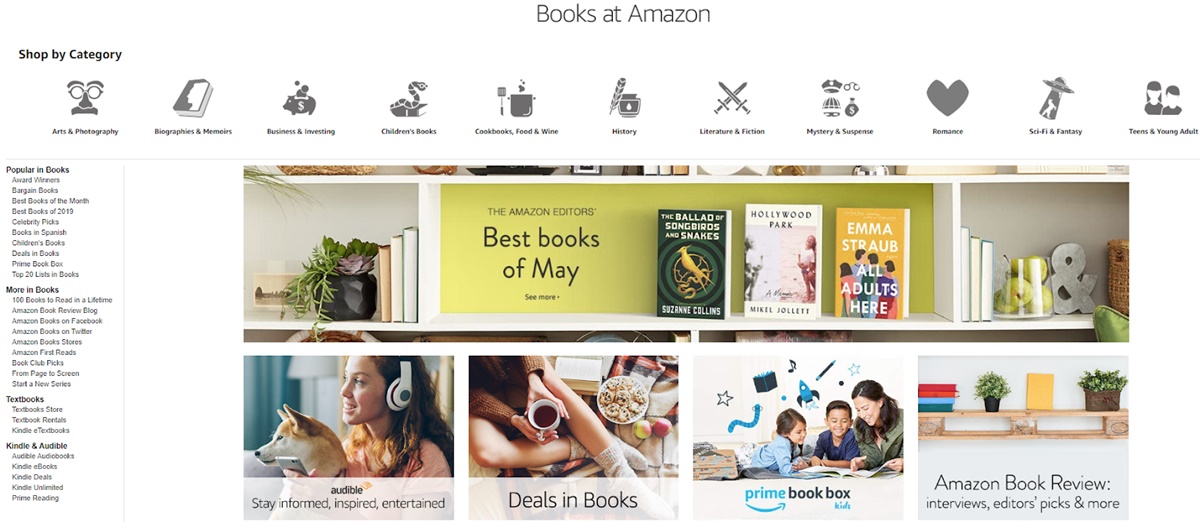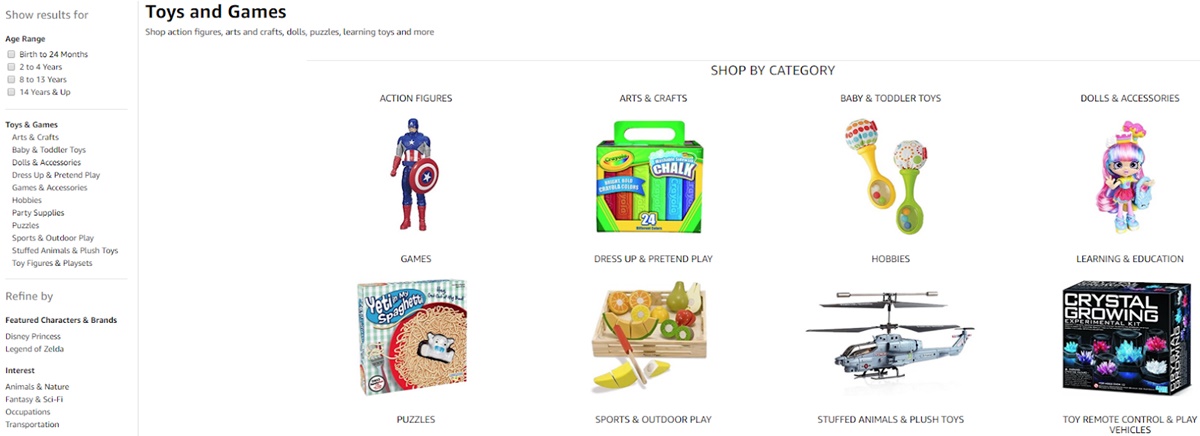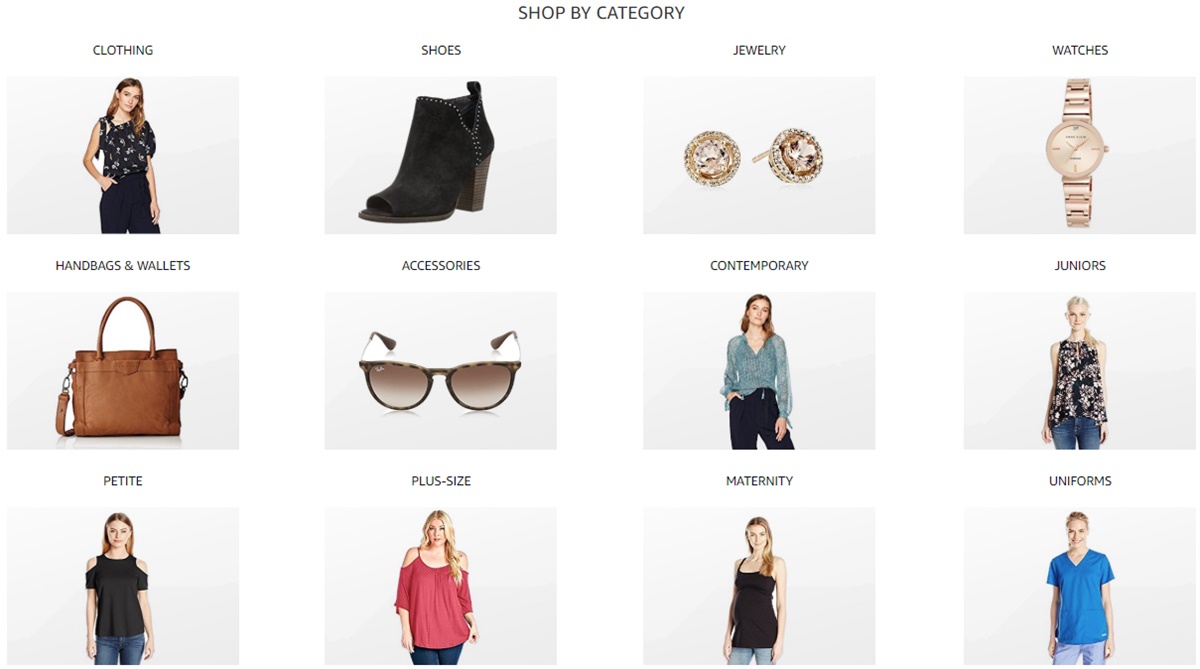How to Find Products to Sell on Amazon (with Examples)
Do you know that in 2018, nearly 50% of U.S online buyers started their product searches on Amazon? This figure was even much higher than other search engines, such as Google, which came with 35% only.
And one year later, in 2019, the percentage of consumers beginning a search for a new product on Amazon hits 66%. Many experts believe that online buyers are heavily relying on Amazon throughout their shopping process. So, there’s no wonder you want to sell products on one of the most profitable sites on the Internet.
If you think of high-demand with low-risk products to sell on Amazon, you’re in the right place. In this guide, we’ll show you the top-selling items, as well as 5 effective ways to make sure whatever you’re selling is a safe bet on the e-commerce giant.
Let’s get started!
Characteristics of a good product to sell on Amazon
The key to successful selling on any e-commerce site is simple - you sell products that are in high demand but with low competition. And, it is also true when selling stuff on Amazon.
However, there are millions of products on Amazon’s catalog for you to look through, and you might find it confusing to choose the best among them. To simplify your product search process, we’ve listed here some vital elements of a good product. If you stick to these points, you can determine what to sell on Amazon right now.
Retail price is between $10-$50
We’ve discovered that this price range makes it easier for both impulse buying and well-informed transactions. Any products over $50 can make customers skeptical, and they will compare prices on different stores for a better deal. Besides, products of $1-$10 are considered to be not worth covering shipping costs, and they tend to switch to physical stores to buy.
Low seasonality
It’s better to sell products that are in high demand throughout the year and not just during specific seasonal periods. You can add Google Trend Report right into the Chrome Extension, which shows you seasonal sales spikes with high accuracy.
Less than 200 reviews
Products with more than 200 reviews usually have a strong customer base, so it becomes harder to compete. As customers feel safer when purchasing from stores that have a wide range of positive reviews, you should build a list of positive feedback to promote your online presence, as well as your customers’ confidence.

Recommendation: The 15+ Best Amazon Review Checkers You Should Try How to find products to sell on Amazon?
Ability to manufacture simply
Of course, you don’t want to run into troubles with quality control and manufacturing concerns, so avoid glass, electronics, or highly complex items if you can.
Ability to be improved
By reading feedback from your competition’s product reviews, you can create an improved and superior product, and stay ahead of the game.
5 ways to find products to sell on Amazon
1. Do manual research on Amazon
What is one of the fastest ways to come up with product ideas? Check the Amazon Best Sellers list!
The Amazon Best Sellers list gives you a practical idea of the top 100 products that are currently being sold on Amazon. Ideally, you can explore a category, sub-categories, and then narrow down on a niche. When you check out that list, you might also see the “Customers also bought” section to get ideas for similar items.
Once you have made a list of products, check Google Keyword Planner to see whether those products have large search volumes, which is an indicator of high demand.
2. Use an Amazon keyword research tool
Jungle Scout is a data-driven keyword research tool, which helps you identify specific needs. By using Product Research Tools, you can see sales volumes, products with low competition, as well as, save products and track them over time.
The analytics of Jungle Scout can help you quickly and effectively narrow down on an item, or an industry in which you could be good at. This tool is quite costly, particularly if you’re just starting out. However, it is still worth trying out and getting the right direction on your business journey.
In addition, you can try Unicorn Smasher for free. Although this tool lacks some sophisticated features and its data are not as accurate as those of Jungle Scout, it is still a helpful option to collect estimated monthly sales and estimated revenue for Amazon products.
For your reference, there is a wide range of options available, such as:
- SellerApp
- AMZScout Pro
- Helium 10
- AMZ Base
- AmazeOwl
3. Find products with low competition
If you are planning to sell an item that currently has 100,000 search results or over, chances are you cannot stand out against the competition and achieve the results you want. But it’s relatively simple to find a niche within a broader market that has less competition, which makes sure your product is more easily found by researchers. Best of all, these searchers are likely more willing to buy from you!
You can find items with low competition keywords that trigger product ads on Google by following the 6 steps below.
#1. Enter 5-10 product niche ideas into the search box of Ahrefs Keyword Explorer
#2. Choose “All Keyword Ideas”
#3. Filter results to only Include Shopping Results
#4. Filter results to only Low Keyword Difficulty

#5. Click the SERP for each keyword
#6. Look for low Domain Rank (DR) sites

A low DR rank on Google indicates that the niche you are looking for is less competitive, and you can start your business idea right away.
4. Find a gap in the market
Through simple organic search, you can come across a gap on Amazon. For example, if you search “men jackets,” you will see over 40,000 results, whereas this number is only 2,000 if you search for more specific keywords, such as “men lightweight bomber jacket.”
Sometimes it’s better to narrow down your product search to find a position to make an impact on Amazon. Lots of people are already selling jackets, but there might be a particular color, type, or style of legging that is missing on the site.
Alternatively, you can find a market gap by reading customer reviews in your niche. This is a timely and cost-effective way to decide what you should be selling on Amazon and why.
When researching Amazon reviews, keep in mind the following things:
- Focus on what items people are raving about
- Look for unhappy customers with a particular product
- Use the complaints to improve your prospective product.
5. Don’t forget Google Trends
Google Trends is an accessible research tool that you should be using in the process of finding products to sell. This tool highlights popular items and helps you zone in on the ideal products in certain periods. The comparison from the search tab also gives you helpful insights about the products you are considering.

Looking at Google Trends will give you a big picture of the top sellers in a wide array of categories. The idea is not to choose trending products, but you can give it a try.
Learn more: How to Sell on Amazon? A Guide To Start Quickly!
Top 6 selling items on Amazon
As you’ve known some must-have elements to make a good product, the next question is, what are the top-selling items on Amazon? For inspiration, let’s take a look at the top 6 below.
1. Books
Books are undoubtedly a popular category on Amazon, especially when physical bookstores are going out of business. You can find best-sellers and new releases, as well as older classics, with many are on sale for less than $20.

We can easily see that this product type almost meets all the required characteristics above. So, there is no reason why it is a viable option to buy in bulk and sell them on Amazon for a healthy profit.
Related topic: How to Sell Used Books on Amazon: Step-by-step Ultimate Guide
2. Electronics
This category remains hot and top-selling, especially in this modern technology world. In our opinion, technology with some forms of Artificial Intelligence (AI), such as Alexa or Apple watch, can attract a massive number of techies around the world.
3. Toys and games
Toys and games are a potential category as children are some of the most excessive consumers in the marketplace. When it comes to selling toys and games, it is necessary to keep an ear to current fads and trends to know how to catch up with.

Furthermore, toys typically work well if they are already popular, or if they’re packed in bulk. For instance, Play-Doh is on the top-selling list in a pack of 10.
4. Camera and photo
This category itself is becoming common due to the social context. As you know, the ‘selfie’ culture is so rampant that almost everyone wants to buy a camera and its relevant products. It might be worth it if you decide to jump into this promising land.
5. Clothing, shoes, and jewelry
Clothing, shoes, and jewelry, by all means, account for a significant part of Amazon’s revenue. With a wide variety of price and quality offerings, this category is appropriate for any starter.

However, remember that people don’t come to Amazon to buy expensive brand items - instead, they look for the discounts. So, it’s critical for you to offer something unique at a reasonable price.
6. Video games
You might feel surprised to know that two-thirds of the items in this category are ‘gift cards’ and not specific games. The availability of video games and gift cards on Amazon can promote customization, as well as personal taste.
When people purchase a gift for a teenager, for instance, they don’t want to ask him or her which games he/she likes. Instead, they give him/her the freedom to decide and choose. This creates a substantial demand for this category.
If these 6 product types are not your favorite, there are many other different options for you to choose from, such as:
- Cosmetics
- Arts and crafts
- Health and household
- Pet supplies
- Sports and outdoors
Of course, the more popular the product category, the stiffer the competition. So, it’s important for you to find your suitable niche to be sure that you will not compete with millions of merchants for one keyword on the search box.
Is it profitable to sell on Amazon?
The answer is, yes, if you know how-to! We can deny that Amazon has already been extremely popular, and it is getting even more widely known every day, especially among third-party sellers.
Amazon is experiencing significant growth in third-party numbers and sales, and it is expected to increase more exponentially in the next few years. In case you still feel unconvinced, look at this fact: in 1999, third-party sellers accounted for only 3% of Amazon sales, and this percentage was all the way up to 58% in 2018! Just by looking at this number, it’s easy to realize how well third-party sellers are doing with Amazon sales.

No matter if you are an ambitious new entrepreneur who wants to do it yourself, or you want to delegate and use the services of others, selling your own brand on Amazon is profitable. You can choose to take control of the shipping, customer service, and other roles yourself, or sign up for the FBA (Fulfilled by Amazon) program to have the Amazon team handle all of the tasks for you.
However, before gaining profits from selling products on Amazon, you need to find something to sell first. Luckily, this process is not that difficult and complicated. To help you deal with this, we will provide 5 simple ways to implement. Keep reading on!
How much does it cost to sell on Amazon?
It is crucial to know how much it costs if you run your business on Amazon. As a matter of fact, Amazon offers two selling plans: Individual and Professional.
Amazon seller fees for a Professional plan include:
- A monthly subscription fee of $39.99
- Variable closing fees and referral fee percentages range from 6% to 25% (an average of 13%)
Amazon seller fees for an Individual plan include:
- No monthly subscription fee
- $0.99 fee for each item sold
- Variable closing fees range from $0.45 to $1.35
If you are new to selling on Amazon with less than 40 units a month, the Individual plan will be your best choice.
The bottom line
Nothing is worse than putting in a lot of money and effort to market a product on Amazon, only to realize that consumers don’t need it, or a large brand is drowning you out. So, before getting started, make sure you understand how to do it.
All you need to know is that running a business on Amazon is based on finding the right popular items, private labeling them, and then undercutting the competition. We hope that, after reading this guide, you will explore the right direction for your business.
Best of luck selling on Amazon!
New Posts






